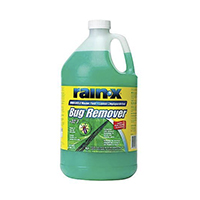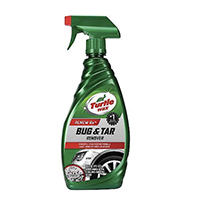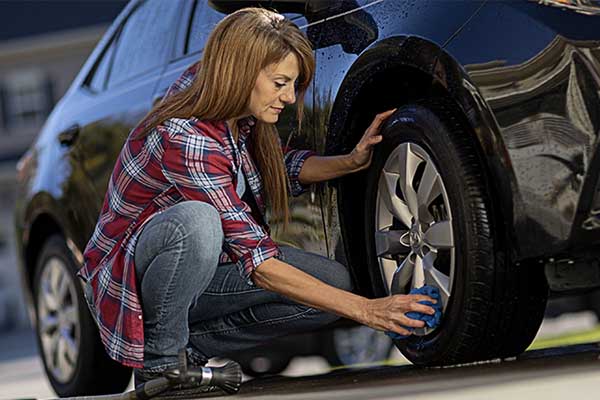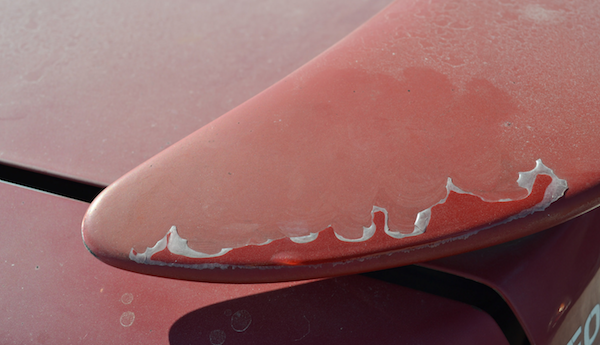They might be called lovebugs, but they don't give drivers the warm-fuzzies. Twice a year, lovebugs descend on Gulf Coast states en masse. Mating pairs attach tail-to-tail and float for days, often right into oncoming traffic.
Their sheer numbers and acidic body fluids make lovebugs more than a nuisance for drivers though. Lovebug splatter, if not cleaned up quickly, can damage surfaces like paint, decrease visibility for drivers, and even clog radiators and overheat engines.
Yes, lovebugs can cause a lot of heartache for drivers. Fortunately, the worst of their impact can be alleviated by taking a few preventive measures, using the right products, and giving your vehicle a regular wash and wax.
Source | Tim Donovan | Flickr
Prevention and the Right Products
When too many lovebug corpses collect on a vehicle's radiator fins or on the grille they can disrupt airflow across the radiator. As a result, the vehicle's engine may overheat.
The best way to avoid sucking up bugs is not to run into them in the first place. Lovebugs are most active between 10 a.m. and dusk. They are most densely populated around areas of moist, decaying vegetation like woodlands. So drivers should try avoid commuting during these times and along wooded areas. Of course, it would be nice if we could do that, but it's not always possible.
Lovebugs are also attracted to the color white. Those in the market for a new vehicle should be aware that white cars are going to get more than their fair share of attention during the semi-annual lovebug invasion.
If these aren't viable options, the next best way to protect an engine is with a bug screen. Nylon bug screens easily clip on or behind a grille. The screen can be regularly removed, cleaned, and replaced. This prevents splatter from building up on the vehicle itself.
To improve visibility, drivers can top off with a windshield washer fluid with bug remover. These products are specially formulated to keep windshields clear instead of a hazy, smeary mess. Still, you're probably going to have to get to a gas station and use a little elbow grease to squeegee the remaining bug guts off the windshield.
Regular Wash and Wax
Car finishes have come a long way since lovebugs were first studied in the early 1900's. However, if left for a few days, lovebugs' acidic body fluids can cause pitting and damage a vehicle's clear coat. So it's best to remove splatter early and often with a thorough wash and wax. Remember that a couple of coats of wax do more than just make your car look shiny and sharp—they help protect your finish from road grit, tree sap and yes, bug guts.
Washing a vehicle regularly removes the bugs before bacteria sets in to speed up the splatter's corrosiveness. A good coat of wax, especially on the hood, offers an extra layer of protection for a vehicle's finish. Drivers will want to repeat the wax every few weeks and continue with frequent washes.
This is a good project for new DIYers
-
Soak the vehicle with water, removing as much of the splatter and debris as possible.
-
Fill a bucket with water and add the recommended amount of wash-and-wax product.
-
Using a microfiber bug scrubber and the cleaning solution (and some elbow grease), remove the remaining splatter. Rinse thoroughly.
-
While the vehicle is still damp, rub a clay bar over any particularly stubborn residue to remove it.
-
For especially sticky windshields, grilles, and headlights, use a bug and tar remover. Spray the solution on the affected surface and let it sit the recommended amount of time. Then use the microfiber bug scrubber to wipe the residue away and rinse.
-
When dry, finish with a glass cleaner product.
-
Finally, apply a coat of wax, closely following the product's instructions. Let the wax dry. For more information, check out our quick five-step guide to waxing.
Lovebug mating season may never be a driver's favorite time of year. With the right products and a little elbow grease, however, drivers can keep their vehicles from becoming just another victim of insect romance. At least until next season.
How do you keep your car bug free? Let us know in the comments.










